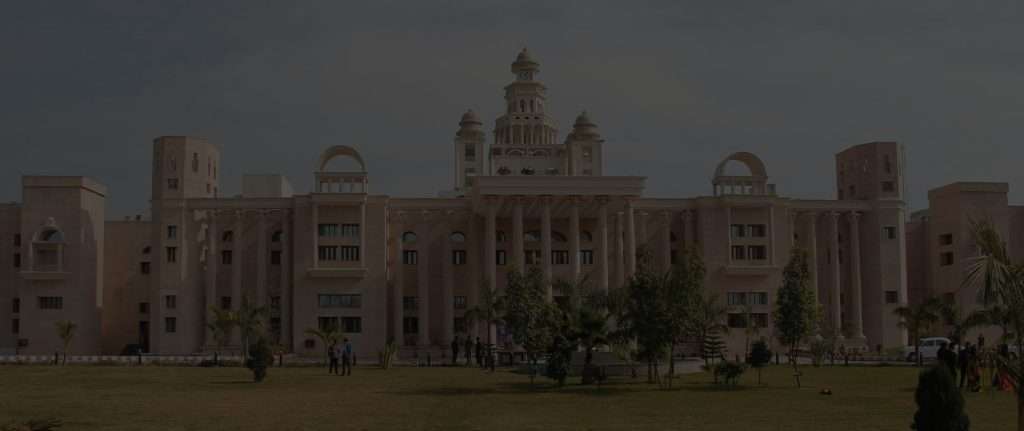Dehradun is the winter capital of Uttarakhand which is also known as “Devbhoomi” (Land of the Gods) due to its religious significance and numerous Hindu temples and pilgrimage centers found throughout the state. Dehradun forms the part of Garhwal region (the other being the Kumaon region) of the Uttarakhand. Dehradun is located in the Doon Valley on the foothills of the Himalayas nestled between Song River, a tributary of Ganga on the east and the Asan River, a tributary of Yamuna on the west. The city is noted for its picturesque landscape and slightly milder climate. Dehradun derives its name from the historical fact that Baba Ram Rai, the eldest son of the Seventh Sikh Guru Har Rai, set up his “Dera” (camp) in “dun” (valley) in 1676. This ‘Dera Dun’ later on became Dehradun.
Tourist sites
1. Forest research institute
“Forest Research Institute (FRI), Dehradun” has its roots in the erstwhile Imperial Forest Research Institute established in 1906 to organize and lead forestry research in the country. Forest Research Institute is located at a distance of 9 km from ISBT Dehradun. This heritage complex is spread across 2000 acres and is known for its spectacular architecture. Constructed in Greco-Roman architectural style, the Forest Research Institute is a perfect place to spend time with your kids. The institute houses six museums that attract the attention of lots of youngsters and adults.
2. Mindroling Monastery
The Buddha Temple Complex, or the Mindrolling Monastery, was initially established in Clement Town, Dehradun, Uttarakhand, by Khochhen Rinpoche in 1965. It is said to be one of India’s most prominent Buddhist centers, located in the serene foothills of the Himalayas. The monastery is blessed with natural beauty and treats us with its visual wonder.
3. Khalanga War Memorial
The memorial is located along the Sahastradhara Road, which is around 5.5 km from Dehradun Railway Station. Khalanga War Memorial is the only memorial in the world that is established by the British army for their war opponent, the Gurkha soldiers.
4. Robber’s Cave
Robber’s cave, also known as Gucchu Pani, is a natural cave formation in conglomerate and limestone. As per local sayings during the British era, robbers used to hide inside the caves from the Britishers. Due to this reason, Gucchu Pani is popular with the name Robber’s Cave.
5. Tapkeshwar Temple
Tapkeshwar Temple in Dehradun is a perfect place for offering your prayers to Lord Shiva. According to local beliefs, this cave temple was once a meditation ground of the sage Guru Dronacharya. The main attraction of this cave temple is the Shiva Linga, where water droplets from the river Yamuna fall directly on the top.
6. Tapovan Temple
Surrounded by forests, mountains, and rivers, Tapovan Temple is one of the most serene places to visit in Dehradun. Located at a distance of 5 km from the city, Tapovan is known for offering peace and spirituality to visitors. According to history, Tapovan used to be a place of worship and meditation for Guru Dronacharya.
7. Paltan Bazaar
Before leaving this divine city, make sure to take some souvenirs with you from the buzzing market Paltan Bazaar. The market is situated between the clock tower and Dehradun railway station.
8. Rajaji National Park
Rajaji National Park is an Indian national park and tiger reserve that encompasses the Shivaliks, near the foothills of the Himalayas. It is spread over 820 km2 and includes three districts of Uttarakhand: Haridwar, Dehradun and Pauri Garhwal.
Nearby famous places
1. Haridwar
The city of Haridwar is situated on the right bank of the Ganges River, at the foothills of the Shivalik ranges and is regarded as a holy place for Hindus, hosting important religious events and serving as a gateway to several prominent places of worship. The city is decorated by important places of significance such as Har Ki Pauri, Chandi Devi Temple, Mansa Devi Temple, Maya Devi Temple, and Piran Kaliyar Sharif.
2. Rishikesh
Rishikesh is situated on the banks of the Ganges River and is known as the “Gateway to the Garhwal Himalayas” and “Yoga Capital of the World”. Rishikesh is the starting point for traveling to the four Chota Char Dham pilgrimage places: Badrinath, Kedarnath, Gangotri, and Yamunotri. It is also a starting point for Himalayan tourist destinations such as Harsil, Chopta, Auli, as well as summer and winter trekking destinations like Dodital, Dayara Bugyal, Kedarkantha and Har Ki Dun.
3. Mussoorie
Mussoorie is a hill station near Dehradun city. Mussoorie is popularly known as “The Queen of the Hills Mussoorie” and is at an average altitude of 2,005 meters. To the northeast are the Himalayan snow ranges, and to the south, the Doon Valley and Shivalik ranges. Dhanaulti, Bhadraj Temple, Camel’s Back Road, Gun Hill, Kempty Falls, and Jharipani Fall.
Climate
The climate of Dehradun is moderate and pleasant for most of the year, as it is situated at the foothills of the Himalayas. The average annual temperature is 20.4°C. The climate of Dehradun varies according to the seasons and the altitude. The spring season is mild and sunny, with temperatures rising from 10.2°C to 25.5°C from March to April. The climate of Dehradun also depends on the altitude, as the higher you go, the colder it gets. Dehradun is a beautiful city with a diverse and rich flora and fauna, and a pleasant climate for most of the year.

